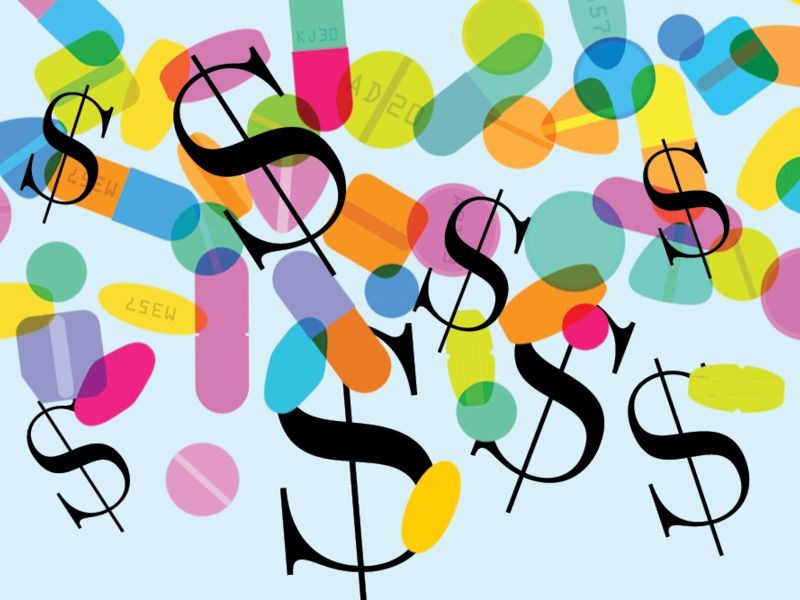
Insurance companies often restrict University of Utah Health physicians from prescribing the optimal drug for a patient’s illness.
Providers are left to choose between the second or third choice after insurers initially deny coverage, in part, to steer doctors and patients toward lower-cost options. In some cases, patients have to go through months of ineffective treatment to merit a more expensive drug, said Erin Fox, senior pharmacy director at University of Utah Health, which has an entire pharmacy technician team devoted to prior authorizations.
“Our providers are overall especially frustrated with prior authorizations because they often aren’t allowed to prescribe what would be the best treatment for an individual patient,” she said, noting the “step therapy” or “fail first” requirement. “The patient has to pay copayments for these visits and may suffer overall worsening of disease state while they make the case to the payer.”
Prior authorization can delay care, since those decisions typically only happen during normal business hours, Fox noted. When physicians want to start a medicine while a patient is still in the hospital, University of Utah Health’s inpatient pharmacy team must determine whether the treatment will be covered in the outpatient setting. That means patients may end up staying in the hospital over a weekend without receiving the appropriate treatment, Fox said.
Prior authorization is part of a myriad of administrative roadblocks bogging down the healthcare system. Insurers, drug manufacturers, physicians and patients spend at least $93.3 billion a year on navigating that administrative complexity, most of which is borne by patients and their physicians, researchers from Novartis Pharmaceutical Corp. and the University of California, Berkeley estimated in a new study published in Health Affairs on Monday.
Patients spend approximately $35.8 billion a year in drug cost sharing after accounting for copay support. Physicians devote $26.7 billion in time to navigate utilization management, and manufacturers invest $24.8 billion in drug donations, discounted copays and administrative support. Payers spend around $6 billion administering prior authorizations, the “conservative” analysis of peer-reviewed papers, industry reports and articles found.
Prior authorization, formularies and patient cost sensitivity can heavily influence physician prescribing patterns, said Scott Howell, chief strategy officer at Novartis and lead author of the study.
“The existing evidence suggests two things—first, that drug utilization management has reached a level that no longer aligns with clinical guidelines,” he said, citing an American Medical Association survey that found that 32% of physicians believe prior authorization criteria rarely or never align with medical guidelines. “Second, they also found that drug utilization management contributes to delays in treatment, use of suboptimal medicines, medication abandonment and worse health outcomes.”
Copay coupons, coverage tweaks and administrative support programs can limit the use of ineffective and overpriced medications, which can reduce healthcare costs. Yet, the healthcare system is caught in a vicious cycle—manufacturers raise the list price and payers bolster access restrictions, which prompts further price increases and even more burdensome limitations, researchers said.
“This is what has led to the escalating cycle that we are experiencing today, where we have higher prices and lower access, which is the opposite of what we want—a system that promotes pricing moderation and great access for patients,” Howell said. “We should work together to de-escalate this so-called ‘war of all against all’ by linking value-based drug prices with better patient access.”
That “war of all against all” stems from misaligned incentives, he said. Health plans decide whether to reduce copays based on the size of the rebate manufacturers offer pharmacy benefit managers. While overall net drug prices have fallen for several years as rebates have grown, higher rebates have inflated list prices and complicated insurance coverage, Howell said.
Manufacturers have tried to lessen the burden of access restrictions through administrative support programs known as “hub services.” Manufacturers spend around $5 billion to $6.7 billion on those programs a year, according to the study.
But those hubs often force patients to use specific pharmacies that are affiliated with the manufacturer, which means the local pharmacy or specialty pharmacy at a health system can’t fill prescriptions, Fox said.
Drug manufacturers also spend between $13 billion to $15 billion a year on direct financial support, including copay discount cards, the analysis found. But Medicare patients can’t use copay cards. Also, some drug manufacturers have funneled kickbacks through purportedly independent charities that paid patient copays.
As for ways to simplify drug utilization management, Praluent—Sanofi and Regeneron’s cholesterol drug—could serve as a helpful example, researchers said.
The manufacturers agreed to charge a net price close to the Institute for Clinical and Economic Review benchmark. In exchange, Praluent had simpler prior authorization criteria and meaningful reductions in cost-sharing requirements.
Pricing should be linked to access, researchers said. Individual manufacturers could voluntarily set prices based on benchmarks proposed by independent organizations. Those value-based prices would be linked to access, where payers get the drugs to patients who need them the most.
“Patients will have easier, more affordable access to the medicines they need; providers will spend fewer hours navigating insurer requirements; insurers will pay less for drugs and need fewer systems to manage access; and biopharmaceutical companies will be able to focus their resources on developing the most innovative treatments,” Howell said.
Source link : https://www.modernhealthcare.com/supply-chain/drug-utilization-management-drains-93-billion-year-study-shows











